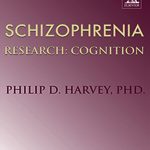
Evidence of discontinuity between psychosis-risk and non-clinical samples in the neuroanatomical correlates of social function
Shalaila S. Haas, … Stefan Borgwardt, ….
2022, Schizophrenia Research
DOI: 10.1016/j.scog.2022.100252
Abstract
Objective: Social dysfunction is a major feature of clinical-high-risk states for psychosis (CHR-P). Prior research
has identified a neuroanatomical pattern associated with impaired social function outcome in CHR-P. The aim of
the current study was to test whether social dysfunction in CHR-P is neurobiologically distinct or in a continuum
with the lower end of the normal distribution of individual differences in social functioning.
Methods: We used a machine learning classifier to test for the presence of a previously validated brain structural
pattern associated with impaired social outcome in CHR-P (CHR-outcome-neurosignature) in the neuroimaging
profiles of individuals from two non-clinical samples (total n = 1763) and examined its association with social
function, psychopathology and cognition.
Results: Although the CHR-outcome-neurosignature could be detected in a subset of the non-clinical samples, it
was not associated was adverse social outcomes or higher psychopathology levels. However, participants whose
neuroanatomical profiles were highly aligned with the CHR-outcome-neurosignature manifested subtle disad-
vantage in fluid (PFDR = 0.004) and crystallized intelligence (PFDR = 0.01), cognitive flexibility (PFDR = 0.02),
inhibitory control (PFDR = 0.01), working memory (PFDR = 0.0005), and processing speed (PFDR = 0.04).
Conclusions: We provide evidence of divergence in brain structural underpinnings of social dysfunction derived
from a psychosis-risk enriched population when applied to non-clinical samples. This approach appears prom-
ising in identifying brain mechanisms bound to psychosis through comparisons of patient populations to non-
clinical samples with the same neuroanatomical profiles
has identified a neuroanatomical pattern associated with impaired social function outcome in CHR-P. The aim of
the current study was to test whether social dysfunction in CHR-P is neurobiologically distinct or in a continuum
with the lower end of the normal distribution of individual differences in social functioning.
Methods: We used a machine learning classifier to test for the presence of a previously validated brain structural
pattern associated with impaired social outcome in CHR-P (CHR-outcome-neurosignature) in the neuroimaging
profiles of individuals from two non-clinical samples (total n = 1763) and examined its association with social
function, psychopathology and cognition.
Results: Although the CHR-outcome-neurosignature could be detected in a subset of the non-clinical samples, it
was not associated was adverse social outcomes or higher psychopathology levels. However, participants whose
neuroanatomical profiles were highly aligned with the CHR-outcome-neurosignature manifested subtle disad-
vantage in fluid (PFDR = 0.004) and crystallized intelligence (PFDR = 0.01), cognitive flexibility (PFDR = 0.02),
inhibitory control (PFDR = 0.01), working memory (PFDR = 0.0005), and processing speed (PFDR = 0.04).
Conclusions: We provide evidence of divergence in brain structural underpinnings of social dysfunction derived
from a psychosis-risk enriched population when applied to non-clinical samples. This approach appears prom-
ising in identifying brain mechanisms bound to psychosis through comparisons of patient populations to non-
clinical samples with the same neuroanatomical profiles